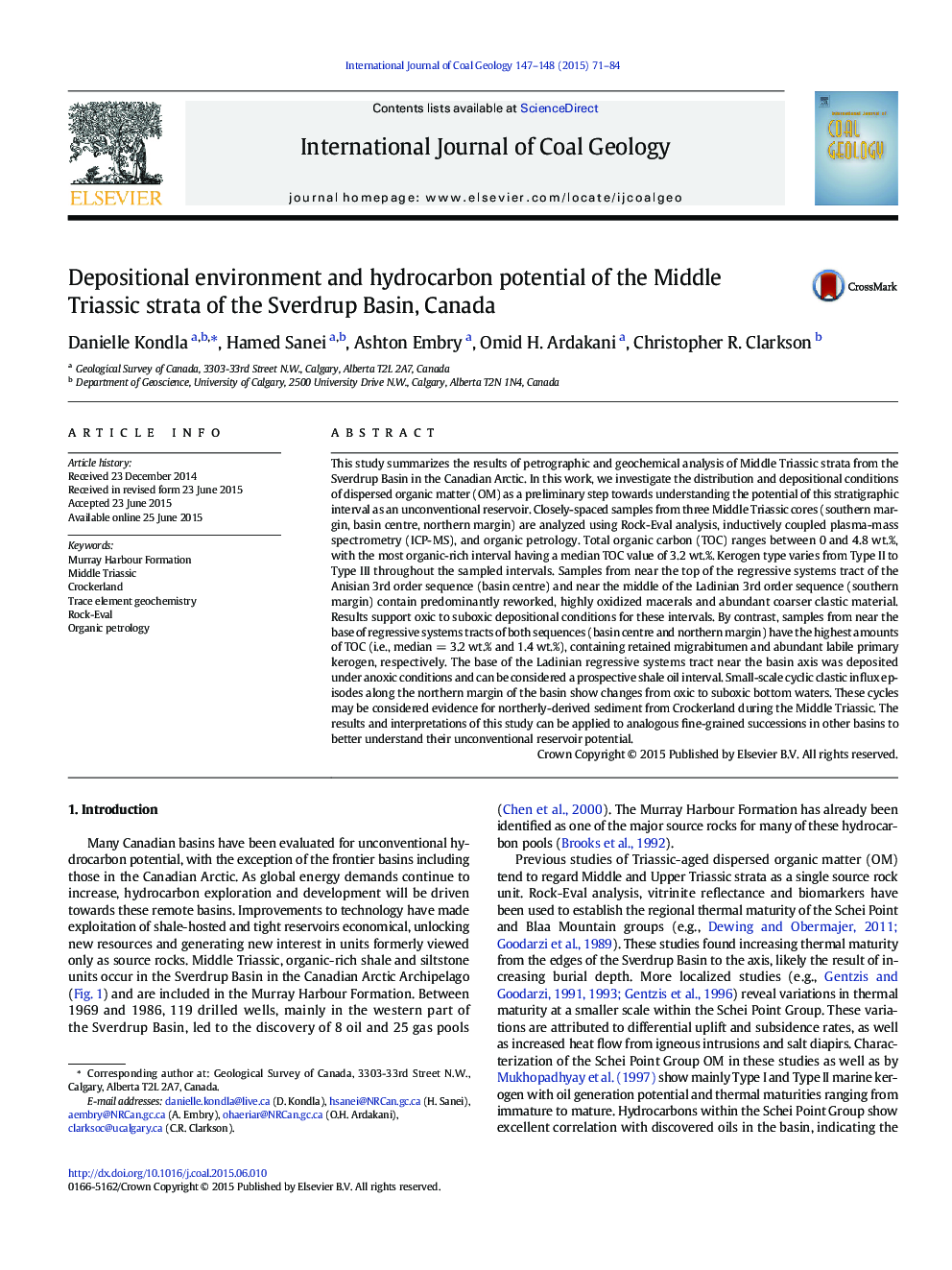| کد مقاله | کد نشریه | سال انتشار | مقاله انگلیسی | نسخه تمام متن |
|---|---|---|---|---|
| 1752938 | 1522553 | 2015 | 14 صفحه PDF | دانلود رایگان |
عنوان انگلیسی مقاله ISI
Depositional environment and hydrocarbon potential of the Middle Triassic strata of the Sverdrup Basin, Canada
ترجمه فارسی عنوان
محیط رسوبی و پتانسیل هیدروکربن های اقیانوس تیاس میانی حوضه سوردپور، کانادا
دانلود مقاله + سفارش ترجمه
دانلود مقاله ISI انگلیسی
رایگان برای ایرانیان
کلمات کلیدی
سازند موریر هاربر، ترایاس میانی، کراکرلند، ژئوشیمی عنصر ردیابی، راک-اوول، پترولوژی ارگانیک،
موضوعات مرتبط
مهندسی و علوم پایه
علوم زمین و سیارات
زمین شناسی اقتصادی
چکیده انگلیسی
This study summarizes the results of petrographic and geochemical analysis of Middle Triassic strata from the Sverdrup Basin in the Canadian Arctic. In this work, we investigate the distribution and depositional conditions of dispersed organic matter (OM) as a preliminary step towards understanding the potential of this stratigraphic interval as an unconventional reservoir. Closely-spaced samples from three Middle Triassic cores (southern margin, basin centre, northern margin) are analyzed using Rock-Eval analysis, inductively coupled plasma-mass spectrometry (ICP-MS), and organic petrology. Total organic carbon (TOC) ranges between 0 and 4.8 wt.%, with the most organic-rich interval having a median TOC value of 3.2 wt.%. Kerogen type varies from Type II to Type III throughout the sampled intervals. Samples from near the top of the regressive systems tract of the Anisian 3rd order sequence (basin centre) and near the middle of the Ladinian 3rd order sequence (southern margin) contain predominantly reworked, highly oxidized macerals and abundant coarser clastic material. Results support oxic to suboxic depositional conditions for these intervals. By contrast, samples from near the base of regressive systems tracts of both sequences (basin centre and northern margin) have the highest amounts of TOC (i.e., median = 3.2 wt.% and 1.4 wt.%), containing retained migrabitumen and abundant labile primary kerogen, respectively. The base of the Ladinian regressive systems tract near the basin axis was deposited under anoxic conditions and can be considered a prospective shale oil interval. Small-scale cyclic clastic influx episodes along the northern margin of the basin show changes from oxic to suboxic bottom waters. These cycles may be considered evidence for northerly-derived sediment from Crockerland during the Middle Triassic. The results and interpretations of this study can be applied to analogous fine-grained successions in other basins to better understand their unconventional reservoir potential.
ناشر
Database: Elsevier - ScienceDirect (ساینس دایرکت)
Journal: International Journal of Coal Geology - Volumes 147â148, 1 August 2015, Pages 71-84
Journal: International Journal of Coal Geology - Volumes 147â148, 1 August 2015, Pages 71-84
نویسندگان
Danielle Kondla, Hamed Sanei, Ashton Embry, Omid H. Ardakani, Christopher R. Clarkson,
